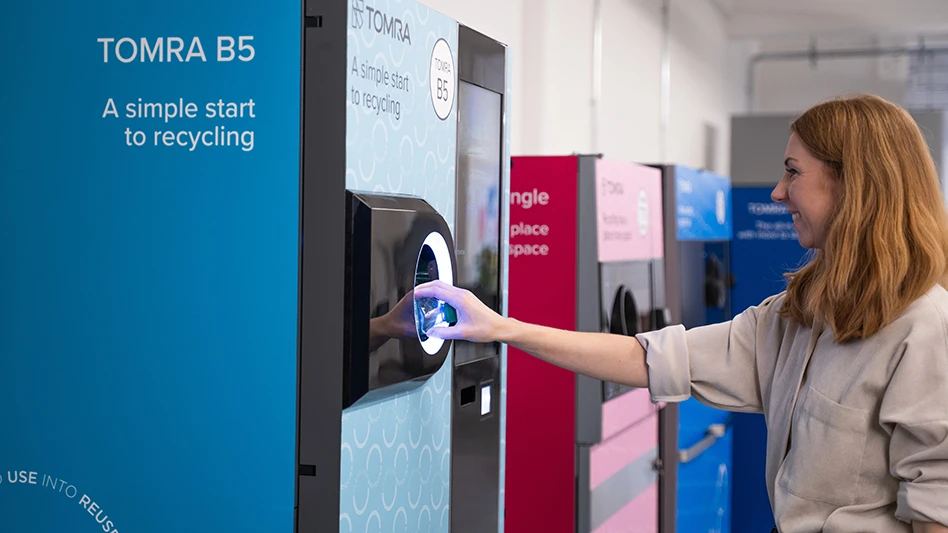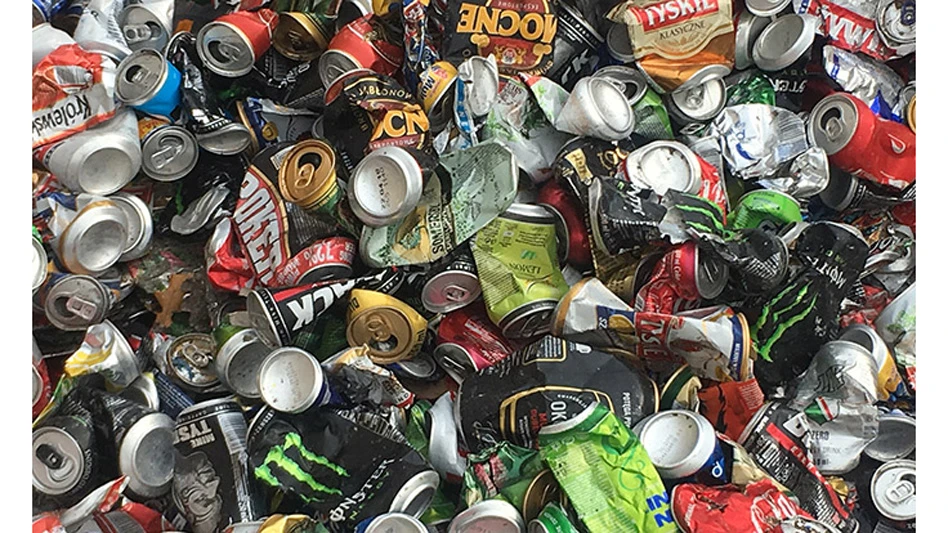Rubber is a difficult material to recycle. Each year millions of pounds of industrial scrap and over 250 million scrap tires are disposed of in North America. Rubber, being a thermoset material, cannot be reformed as can thermoplastic materials such as polyethylene or polypropylene. Many rubber products, including tires, are a combination of fiber and/or steel reinforcements, cured w
A passenger car tire weighs approximately 24 pounds, consisting of 16-20 pounds within a formulation that can include several different types of rubber or other unique materials. of rubber, 2-5 pounds of steel and approximately 2-3 pounds of synthetic fiber used to reinforce the rubber. At disposal, approximately 4 pounds of rubber have typically worn off the tread, while the remaining 20 pounds of rubber, steel and fiber are discarded. Tires are also designed to be very durable, making them even harder to recycle.
Traditional means of dealing with scrap rubber include: landfill, incineration, grinding to make filler materials and cutting simple parts from tire sidewalls. Burning of rubber for fuel (incineration) is currently the most common way to recycle rubber. Many people and companies feel that this is the only viable means to reduce the stockpile of scrap tires and to keep pace with the millions of tires discarded annually. Rubber recycling outside of fuel applications is still very low volume, with niche applications.
NRI Industries is a manufacturer of rubber parts for Automotive and Industrial applications. NRI’s competitive advantage derives from its competence at converting both post-industrial and post-consumer rubber scrap into functional finished products. The technologies to produce re-vulcanizable blends of scrap rubber and the processes to efficiently convert these blends into sheet and molded products, gives NRI a competitive cost advantage and, in many cases a product performance advantage versus it’s competitors. About 80 percent of NRI’s manufacturing output is in the form of sheet and compression molded products, while the remaining 20 percent is in injection-molded parts.
RUBBER RECYCLING VALUE CHAIN
The recycling value chain at NRI Industries consists of four stages. As rubber is transformed in each stage, its value increases. The market opportunities for the first three stages are materials related. The outputs from these stages can either be sold or used as inputs for the subsequent stage. The final stage is the molding of parts using the materials developed in the earlier stages. This stage has the highest added value. Except for the scrap steel, all the outputs from each stage are currently used to mold parts.
End-of-life passenger car tires (post-consumer) and tire plant waste (post-industrial) are the raw materials feeding the value chain. Tire plant waste is comprised of two materials: Uncured calendered tire compound containing cord (i.e. polyester and nylon) and uncured extruder or Banbury tire compounds, which do not contain cord. The rubber used in tire compounds is mostly a mixture of NR and SBR. The recycling value chain can also be applied to other rubber waste streams, e.g. EPDM.
Granulation
The first stage of the value chain is granulation. Tires are shredded and the steel, fiber and rubber are separated. The recycled steel is sold to scrap metal processors. The recycled fiber is used in later stages as a reinforcement. This material can also be sold for agricultural applications. The coarse rubber crumb is used in later stages to mold large cross-section molded rubber products or as inputs to the Advanced Processing Stage. Crumb rubber can also be sold for construction coatings or sealant applications and as a soil amendment to reduce compaction, aid in aeration and improve drainage.
Advanced Processing
Ground rubber in this stage is further processed to enhance properties. The finer the rubber crumb, the more that can be substituted for virgin rubber. This is due to the increased surface area of the material and increased bonding sites available. Another method to create new bonding sites is to modify or re-activate (devulcanize) the surface of the rubber particles.
The devulcanization of rubber has been investigated by several investigators. The different methods1 which have been developed to break the polysulfide linkages include using chemical agents, thermal energy, mechanical shear and microwave radiation. Rubber reclaiming involves treating cured waste rubber with chemical agents and heat, followed by intensive mechanical working. In the early 1950’s more than 500 million pounds of reclaimed rubber was used in North America2, mainly by the tire industry. However due to tightened environmental regulations, the amount of reclaimed rubber used today is orders of magnitude lower.
NRI Industries has developed proprietary technology to re-activate the surface of rubber particles using thermo-mechanical modification. The process3 involves using an intensive mixer/compounder to transform the rubber crumb into Symar-Dä4. This material has been incorporated into a variety of products at concentrations up to 50 percent.
Compounding
The third stage of the value chain involves combining the recycled rubber with other ingredients to yield molding compounds. Rubber molding compounds consist of uncured preforms for sheet or compression molded parts and uncured strips for injection-molded parts. Plastic compounds consist of combining fine grind rubber with plastics to form thermoplastic elastomers.
Molding & Processing
The final stage of the value chain is the manufacture of parts. Typical processes used include injection molding, compression molding, calendering, die cutting and continuous curing.
MASTICATED RUBBER
The term Masticated Rubber defines a family of materials that is a mixture of tire-derived recycled rubber and fiber. This mixture of rubber and fiber has been engineered to align the fibers to create unique performance characteristics. Fiber adds strength, increases the modulus or stiffness, increases the overall hardness of the final product and reduces the elongation or stretching.
NRI Industries processes over 50 million pounds of Masticated Rubber compounds annually. These materials are used to make over 200 industrial and automotive components. Vehicle applications range from passenger cars to heavy trucks and Noise & Vibration to Air & Water Management.
The following is an example of a typical Masticated Rubber formulation:
Grindings --23 percent
Post-Industrial Recyclate
· Uncured Calendered -- 37 percent waste with cord
· Uncured Extruder -- 13 percent or Banbury waste (no cord)
Post-Consumer Recyclate
· Crumb --7 percent
· Short Fiber --8 percent
· Long Fiber --5 percent
Chemicals
· Oil --4 percent
· Cure -- 3 percent
Grindings represent die cutting trim and skeletons. In addition to the fiber added to the formulation, short fibers are also present in the uncured calendered waste component (~10 percent). The chemical treatment on these fibers is still active, allowing them to further reinforce the matrix.
The processing characteristics of Masticated Rubber differ from those of unfilled virgin rubber. The compound is drier and more porous. As a result, higher processing temperatures and pressures are required. In addition, because of the nature of the raw materials used, the color of the molded parts are black and the surface not necessarily smooth.
Applications
Masticated Rubber is an ideal material for under the hood and chassis applications. In these cases its black color blends nicely with the other chassis and engine components. The surface appearance is also not critical, as the component is not directly visible.
The key automotive applications for Masticated Rubber products include:
· Radiator Seals and Air Baffles: These rubber products are used to fill the space between the radiator or a/c condenser and vehicle body, thereby ensuring that all air entering the front of the vehicle is directed through the radiator.
· Splash Shields, Splash Guards, Water Baffles and Fender Extensions: These rubber parts are used in the fender or wheel well to reduce water spray or splash in the engine compartment. They can also be used on specific water sensitive engine or brake components as shields to reduce water or dust intrusion.
· Close Outs and Sight Shields: These rubber parts are often used to hide the complexity of engine compartment components behind the front of the grill of the vehicle.
· Headlamp Seals: These rubber parts are used to seal around the rear of the headlamps against the structural sheet metal. These seals eliminate one non-functional air path for the cooling air that enters the front of the vehicle. With this path closed, air is forced to travel through the radiator and a/c condensor, resulting in improved cooling.
· Spare Tire Protector: These rubber parts serve as an isolator between the spare tire wheel and floor pan, thereby eliminating rubbing by the wheel on the floor pan.
· Fuel Tank Pads: These rubber parts serve as an isolator between the fuel tank and chassis, thereby reducing the transmission of noise and vibration.
Parts made for these applications must be able to withstand:
· Impact of water and road debris.
· Dynamic forces due to air flow.
· Tensile and elongational stresses caused by the jounce of the vehicle. Parts are usually fastened to different chassis or body components, which can move in different directions.
· Cold temperatures.
· Hot temperatures in the radiator section.
Rubber, especially fiber reinforced Masticated Rubber, is an ideal material for these types of applications. A variety of customer specifications have been developed for Masticated Rubber. They include: GM3805M, International TMS 6008, GM6400MR, Chrysler MS-EE26, GM6440M, Nissan NAV 607-0412, Ford WSS-M2D476-A7, Ford WSS-M2D476-A1, Ford WSS-M2D476-A2 and Ford ESA M2D119-A.
The difference in the properties between the machine direction and transverse direction is due to preferential fiber orientation along the calendering direction.
One of the key advantages of using Masticated Rubber for Air & Water Management applications is related to its durability.
The differences observed are small and within the typical SAE and ASTM aging tolerances for rubber materials.
Masticated Rubber faces competition from sheets made from urethane bonded rubber crumb, rubber dispersed in a polyolefin matrix (e.g. EVA), from sheet and molded plastic. The properties of all the competitive products are different from NRI’s products and the cost/performance requirements of the individual application will determine the competition in many instances.
Masticated Rubber is the only product that uses fiber as a reinforcement. Competitive products made using rubber crumb that is a by-product of buffing of the tire surface during the tire retreading process, do not contain fiber. Competitive products made using rubber crumb that is a by-product of the tire shredding process, contain fiber (inactive surface treatment) that is encapsulated in the cured rubber particle. This material, as a result, acts as a filler.
Plastic based products can also have limitations related to the usage temperature.
As the test temperature increases, the physical properties of the EVA/Crumb blend deteriorate quickly. This result is not surprising when evaluating thermoplastic materials above or near their softening temperatures. The VICAT softening point of EVA can be as low as 450C.
New Developments
As the design of under-the-hood parts become more complicated, the flexibility to attach parts to surrounding components becomes more difficult. More and more applications are being seen where there is a need for a stiffer product. To address these design issues, technology was developed to stiffen Masticated Rubber by incorporating a polyester/nylon nonwoven fabric. The added plies help improve the stiffness, tensile strength, tear strength, heat resistance, ozone resistance and oil resistance.
The ASTM and SAE Heat Resistance of AA materials is determined after 70 hrs at 70°C. Depending on the grade classification, the tolerances can be as severe as ±25 percent (tensile and elongation) and ±10 pts (hardness). The test conditions above represent severe service conditions and greatly exceed those recommended for Masticated Rubber.
The first commercial application for this new technology involves converting a 3-D compression molded air deflector to a 2-D die-cut part. The increased material cost (fabric plies) was offset by lower manufacturing costs, higher capacity (thereby eliminating the need for additional tooling) and lower scrap. Simplifying the process allows for cost savings to both the customer and supplier. Plastic materials could not be considered for this application because of the cold temperature impact, heat resistance and durability requirements for the part.
SYMAR-Tä THERMOPLASTIC ELASTOMER
Symar-Tä is a family of thermoplastic materials developed by NRI Industries over the past three years. This TPE is a combination of polyolefins, recycled rubber and compatibilizers. Symar-Tä materials offer the typical properties of elastomeric materials (low modulus, low compression set and low hardness), with the advantage of thermoplastic melt processibility at a low cost.
Symar-Tä 200 is a grade designed for under-the-hood applications. Typical applications include air deflectors, radiator seals and splash guards. Color and surface appearance, in these cases, are not critical characteristics. This allows for a very high recycled rubber content, >50 percent (post-consumer end-of life passenger car tires). Table 1 presents typical data for Symar-Tä 200.
Symar-Tä 700 is a grade designed for exterior applications. Typical applications include air dams, site shields, air deflectors and sill covers. Color and appearance in these cases although specified, is not as critical as for other body components (i.e. Class A finish) and is typically black and textured. The recycled content is >30 percent post-consumer recycled rubber. Table 2 presents typical data for Symar-Tä 700.
ENVIRONMENTAL IMPACT
The environmental benefits associated to the processes developed by NRI Industries based on using tire derived rubber are substantial.
· Significant reduction in the number of end-of-life passenger cars sent to landfills or burned for fuel. Over 1.25 million end-of-life passenger car tires are recycled annually into Masticated Rubber parts. In addition, over 50 thousand end-of-life passenger car tires are recycled into Symar-Tä TPE products.
· Significant reduction in the amount of tire plant waste sent to landfills. Over 25 million pounds of tire plant scrap is recycled annually into Masticated Rubber parts.
· Reduction in CO2 emissions: Over 60 million kilograms less carbon dioxide is emitted into the atmosphere, as compared to making these parts using virgin rubber. This estimate is based on using Rubber Association of Canada reported data for 1998.
· Plant waste recycled: All plant waste (die cutting trim, scrap, flash etc.) is recycled as grindings back into the formulation. Over 12 million pounds of material that would otherwise be sent to landfills is recycled.
· Recyclability: All the parts made using Masticated Rubber are 100 percent recyclable. In addition, this material does not impact the ability of a vehicle to be shredded or the quality of ASR produced.
· Similar products can be made using virgin plastic or rubber. The environmental impact of producing over 50 million pounds of virgin material can also be significant. This can be eliminated using Masticated Rubber.
CONCLUSION
Rubber is not generally thought of as recyclable material, as say compared to plastics. Rubber recycling technologies have been developed by NRI Industries that can transform end-of-life passenger car tires and tire plant waste materials into useful and economical rubber and thermoplastic 2-D and 3-D automotive and industrial parts. The materials developed not only exceed the recycling targets of the automotive industry, but also offer superior part performance at a lower cost.
Recycled rubber based parts can displace both rubber and plastic parts made from virgin materials based on functionality and cost. Rubber remains the choice of materials for parts where durability (cold temperature, impact and flexural) is important.
Recycling of tires into new parts is an embryonic industry, but growth will come as people become aware of what is possible and pressures for environmental improvement increase. The author is Vice President Materials & Product Development for NRI Industries. The presentation was first given during the GPEEC Seminar held earlier this month in Detroit.
REFERENCES
1. W.C. Warner, Rubber Chemical Technology, page 559, Volume 67 1994.
2. W. Klingensmith and K. Baranwal, Rubber World, page 41, June 1998.
3. A. Kolinski et al, 154th Technical Meeting, Rubber Division, American Chemical Society, Nashville TN, October 1, 1998.
4. Symar, Symar-D and Symar-T are registered trademarks of NRI Technology Inc.
Latest from Recycling Today
- ReMA urges open intra-North American scrap trade
- Axium awarded by regional organization
- China to introduce steel export quotas
- Thyssenkrupp idles capacity in Europe
- Phoenix Technologies closes Ohio rPET facility
- EPA selects 2 governments in Pennsylvania to receive recycling, waste grants
- NWRA Florida Chapter announces 2025 Legislative Champion Awards
- Goldman Sachs Research: Copper prices to decline in 2026





